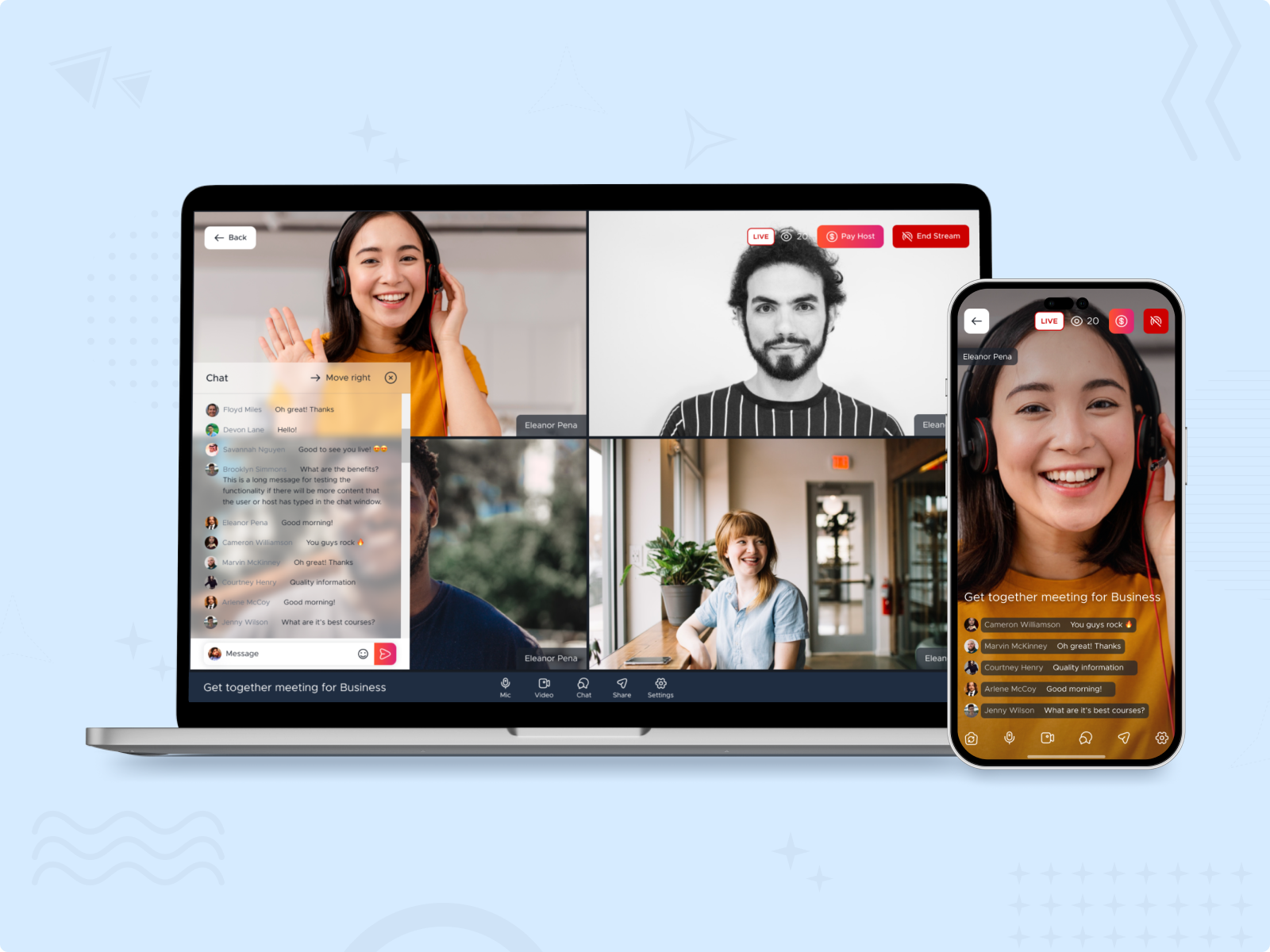In an era where remote work and virtual meetings have become the norm, developing a robust video conferencing app for businesses can provide significant value. Such an app facilitates communication, collaboration, and productivity across teams and organizations. This guide outlines the essential steps to create a video conferencing app tailored for business needs.

Table of Contents
ToggleStep 1: Market Research and Planning
- Identify Target Users:
- Determine your target audience, which may include businesses of various sizes, remote teams, or specific industries. Understanding their needs and preferences is crucial.
- Analyze Competitors:
- Research existing video conferencing solutions like Zoom, Microsoft Teams, and Google Meet. Identify their strengths, weaknesses, and unique features. Look for gaps in the market where your app can provide added value.
- Define Your Unique Selling Proposition (USP):
- Outline what differentiates your app from competitors. Consider features like enhanced security, custom branding, advanced collaboration tools, or unique integrations.
Step 2: Define Features and Functionality
Identify key features that will enhance user experience and engagement:
- User Authentication:
- Implement secure login methods, such as email/password, single sign-on (SSO), or two-factor authentication, to ensure user security.
- Video and Audio Conferencing:
- Enable high-quality video and audio streaming, allowing users to join meetings seamlessly. Consider features like HD video, background noise suppression, and echo cancellation.
- Screen Sharing and Collaboration:
- Include features for screen sharing, file sharing, and collaborative whiteboards to facilitate teamwork during meetings.
- Meeting Scheduling and Calendar Integration:
- Allow users to schedule meetings, send calendar invites, and integrate with popular calendar apps (like Google Calendar or Microsoft Outlook).
- Chat Functionality:
- Implement a chat feature for real-time messaging during meetings, including support for group chats and file sharing.
- Recording and Playback:
- Provide users with the ability to record meetings and access playback for future reference, which is particularly useful for training or onboarding.
- Security Features:
- Incorporate end-to-end encryption, password protection for meetings, and waiting rooms to enhance security and privacy.
- Mobile and Desktop Compatibility:
- Ensure your app is available on both mobile (iOS and Android) and desktop platforms (Windows, macOS) to accommodate all users.
Step 3: Design the User Interface (UI)
- Wireframes and Mockups:
- Create wireframes and prototypes to visualize the app’s layout and user flow. Use tools like Figma, Adobe XD, or Sketch for design.
- User-Centered Design:
- Focus on creating an intuitive and accessible interface. Ensure easy navigation, clear icons, and user-friendly controls.
- Brand Identity:
- Design the app to reflect your brand identity, using a consistent color scheme, typography, and visual elements.
Step 4: Choose Your Technology Stack
- Frontend Development:
- Select a frontend technology stack. For mobile apps, consider using React Native or Flutter for cross-platform development. For web apps, use frameworks like React, Angular, or Vue.js.
- Backend Development:
- Choose a backend technology stack that supports real-time data processing and video streaming. Popular options include Node.js, Django, or Ruby on Rails.
- WebRTC Technology:
- Utilize WebRTC (Web Real-Time Communication) for enabling real-time video and audio communication within your app. WebRTC is a powerful open-source project that allows peer-to-peer connections.
- Database:
- Select a database solution (like PostgreSQL, MongoDB, or Firebase) to store user data, meeting details, and chat histories.
- APIs and SDKs:
- Consider integrating third-party APIs or SDKs for additional functionality, such as Twilio or Agora for video and audio communication.
Step 5: Development Process
- Agile Development Methodology:
- Use an agile approach to development, breaking the project into manageable sprints for iterative progress and regular feedback.
- Frontend and Backend Development:
- Develop the frontend UI based on your designs and connect it to the backend functionality. Ensure seamless integration with video streaming capabilities.
- Integration of Features:
- Implement the key features identified in Step 2, ensuring a smooth user experience and functionality.
- Testing:
- Conduct thorough testing throughout the development process, including unit testing, integration testing, and user acceptance testing. Focus on performance testing to ensure the app can handle multiple users concurrently.
Step 6: Launch and Marketing
- App Store Optimization (ASO):
- Optimize your app store listings with relevant keywords, engaging descriptions, and appealing visuals to improve visibility in app stores.
- Launch Strategy:
- Plan a launch event or promotional campaign to create buzz around your app. Consider partnerships with local businesses or organizations for initial user acquisition.
- Social Media and Content Marketing:
- Use social media platforms and content marketing strategies to reach your target audience. Share educational content about effective virtual meetings and app features.
- Engagement and Retention:
- Implement strategies to keep users engaged, such as regular updates, user feedback loops, and personalized user experiences.
Step 7: Monitor and Improve
- User Feedback:
- Collect feedback from users to identify areas for improvement. Use surveys, reviews, and direct communication to gather insights.
- Analytics:
- Implement analytics tools to track user behavior, engagement, and retention rates. This data will inform future updates and feature enhancements.
- Regular Updates:
- Continuously improve your app based on user feedback and emerging trends in video conferencing technology. Regular updates will keep your app relevant and valuable.
Conclusion
Developing a video conferencing app for businesses presents a unique opportunity to enhance communication and collaboration in an increasingly remote world. By understanding user needs, implementing robust features, and prioritizing security and performance, you can create a valuable tool that meets the demands of modern business communication. Through careful planning, development, and ongoing improvement, your video conferencing app can become a go-to solution for businesses seeking effective virtual collaboration.


No responses yet